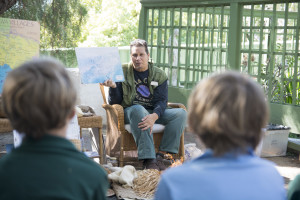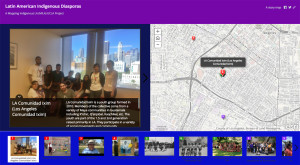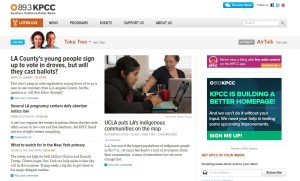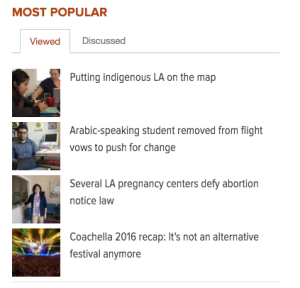L.A. is home to one of the largest populations of indigenous people in the United States. That includes those who are native to Southern California and indigenous peoples who have relocated here.
Yet many of L.A.’s indigenous peoples find that awareness of their communities can be lacking among the general population.
“As a teenager I got really frustrated when people would ask me ‘Where are you from? What’s your heritage?’ and I would tell them, and they would know nothing about the indigenous people of this area. A lot of our own people didn’t even know,” said Craig Torres, a member of the Tongva community. His ancestors, sometimes called Gabrieleño, were native to the L.A. basin before European settlers arrived.
Since the Tongva people have never been federally recognized as a tribe, they have no reservation, no official cultural center, and only scattered resources for preserving their heritage. That lack of access to accurate information about L.A.’s Native American communities sparked an idea with a group of researchers at UCLA.
“Really what we wanted to do is create kind of a virtual world where people would have access to the different-layered indigenous L.A.,” said Mishuana Goeman, a member of the Tonawanda band of Seneca Indians, and a professor at UCLA.
Goeman and other faculty and student researchers are developing a new educational website called Mapping Indigenous LA. The site aims to be a comprehensive resource for information about L.A.’s indigenous groups. Goeman and the rest of the team collaborated with community members to piece together L.A.’s history told from the indigenous perspective.
“When we’re looking at everything around us in L.A., everything is fenced off, has boundaries, people own this, people own that,” said Desiree Martinez, a Tongva community member and an archaeologist. “But for native communities, when we look at the land, it’s all connected. So we’re trying to document the way native people look at the land.”
The site points out some L.A. places that indigenous people see differently, like the area of downtown L.A. where indigenous slaves were once traded, or Kuruvunga Springs near UCLA, which was once the center of a thriving Tongva village.
“Those places have been excavated archeologically, but you have to know where to find that information,” said Wendy Teeter, curator of archaeology for UCLA’s Fowler Museum and another researcher for the Mapping Indigenous L.A. project. “Los Angeles’ history really needs to be given back to people and we need to have those first-person stories from the communities talk about why these spaces are important and not to be forgotten.”
The site launched in October and is still in development, but the project goes beyond just information about the Tongva, Chumash, and other Southern California indigenous communities.
Los Angeles has become home to American Indians from across the country, as well as indigenous peoples from Latin America and Pacific Island nations, who relocated here voluntarily or through displacement over many generations. Goeman said each of those communities has its own history within L.A.
“That’s something we wanted to get at: how do you begin to make a place? It’s not like when you get here you forget all your old world.”
Goeman said the researchers are happy to provide the platform and hope community members will come forward to tell their own stories.
The site illustrates those stories through interactive maps, timelines, digitized historical documents, links to other educational resources, and video interviews with community members. Goeman and her team said most of this information was publicly available before, but it has never been conveniently compiled in one place. The team hopes the website will become a trustworthy resource for information that has been vetted by the communities represented.
Goeman said a major goal of the Mapping indigenous L.A. project is to get across the idea that indigenous communities are not a thing of the past in California. In fact, census data shows the state has the highest number of residents with American Indian or Alaska Native heritage in the country—over 700,000.
“If you’re there being presented with a live, living person, it really gets past that stereotype that Indian people are dead or still dying,” Goeman said. “What people don’t realize is we’ve actually increased in numbers, and we’ve increased in knowledge and we’ve increased in the recovery of our languages through revitalization, and that’s kind of what we want to show, that vibrancy.”
Listen to this story on KPCC




